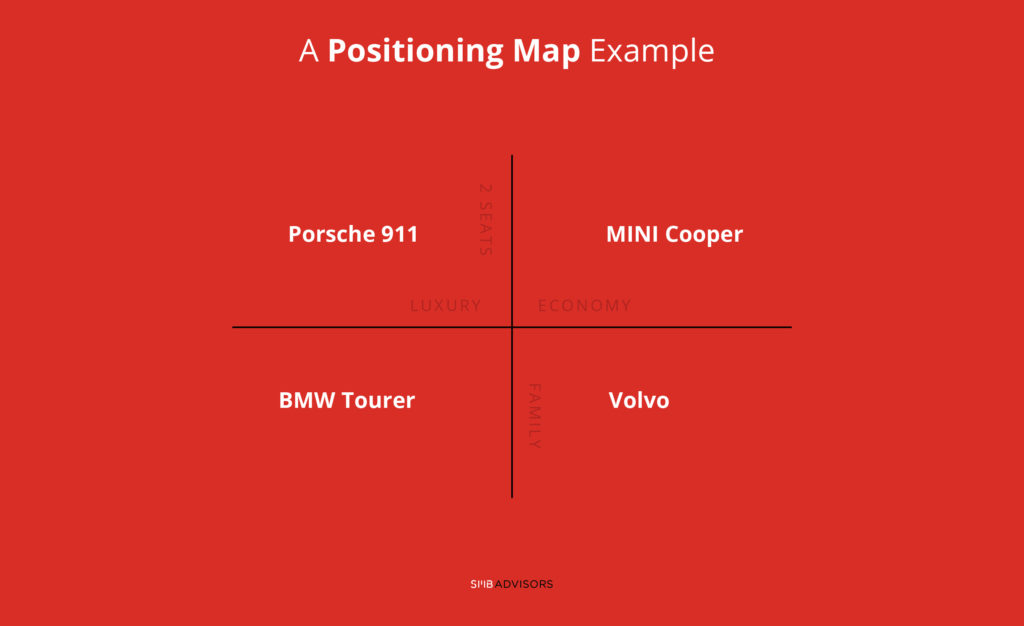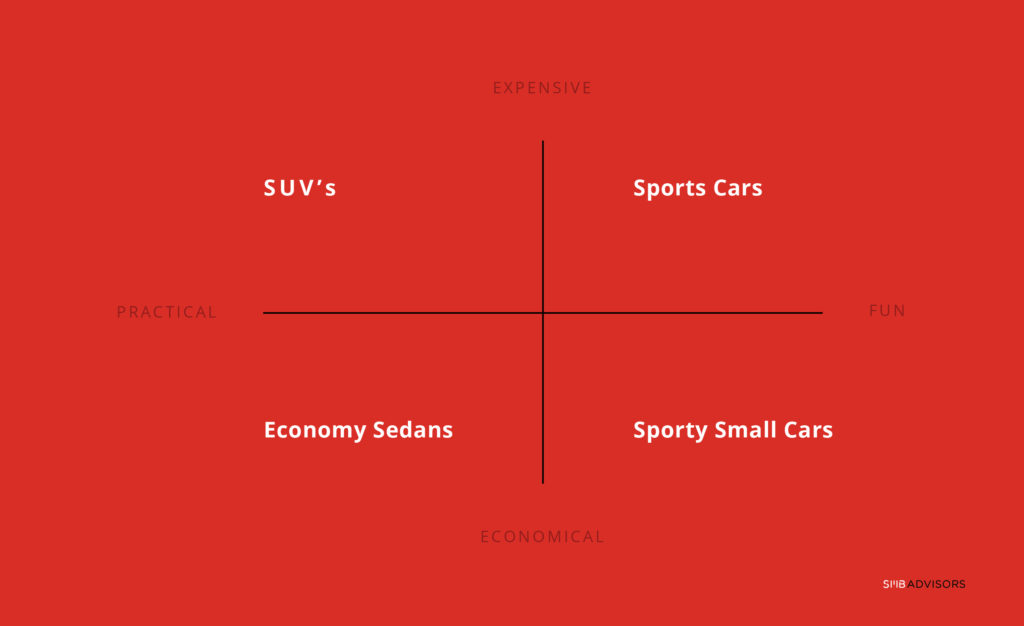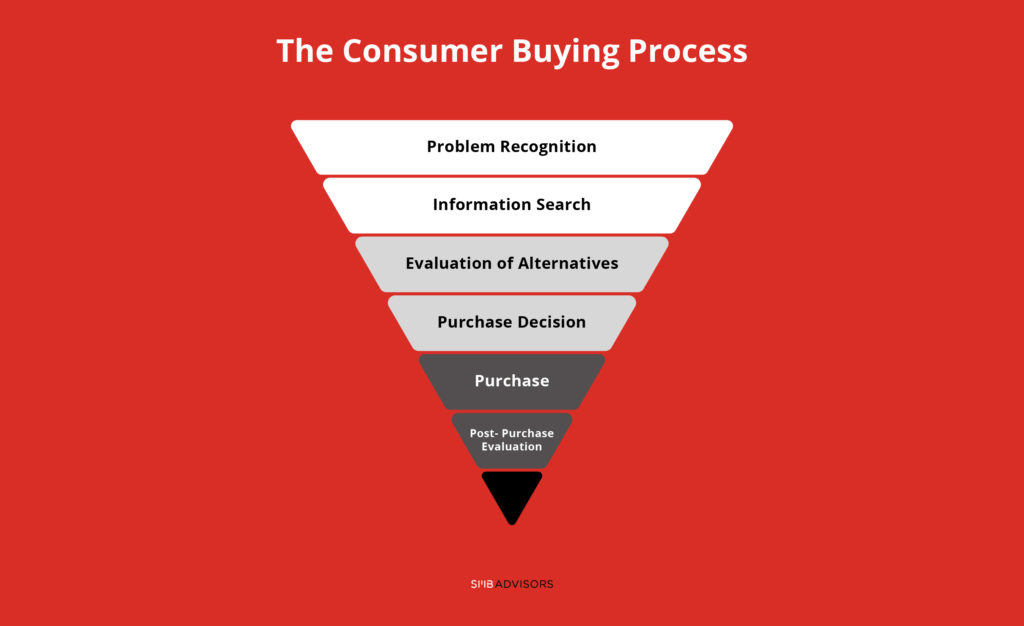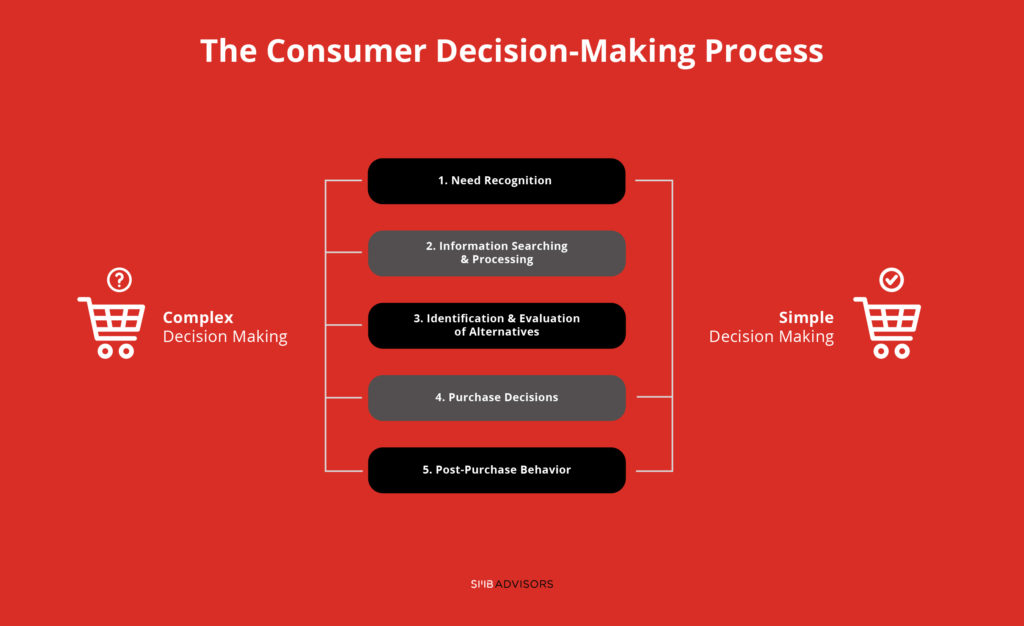7 Steps To Create An Integrated Marketing Communication Plan

In an age where a myriad of companies vie for the attention of leads, one of the most critical needs for a company is the establishment of a robust marketing and sales pipeline and enterprise system.
Such a system – which includes marketing, sales, PR, and communication experts – is tasked with reaching prospects, leads, and customers with crucial information associated with a company’s brand, products, services, events, and more.
An enterprise’s marketing strategy encompasses the strategic approach to ensuring a company utilizes all mediums and marketing channels effectively and efficiently to further the company’s goals.
Such goals typically include reaching more demographics, retaining customers and converting leads, creating brand ambassadors, and expanding the company’s reach into different territories and regions, with the ultimate purpose of increasing profit margins.
A company’s marketing strategy consists of the CEO, Chief Marketing Officer (CMO), CFO, and other C-suite executives who work to align all marketing processes and projects with the overarching business model and vision of the enterprise.
Within the scope of the marketing strategy, as noted by Simplicable, several mediums or channels can be used toward fulfilling the goals of a company’s marketing department:
- Television
- Radio
- Online Digital Assets
- Apps
- Messaging apps
- Social Media
- Games
- Events
- Graphics
- Publications
- Whitepapers
- Articles
- Mail/Email
- Public Speaking
In this digital age, business marketing is usually divided into two categories:
- Outbound (traditional) marketing: Going out to customers to advertise the company’s products/services, trying to convince unqualified leads to become customers, often via “cold calling.”
- Inbound (digital) marketing: The use of content marketing, like blogs, articles, and other educational material deployed on a business’ online assets, to draw potential customers to the company’s products/services, via leading.
The Marketing Funnel and Sales Funnel visual systems are often vital to understanding marketing communications. Different processes within the marketing strategy align with different phases of the marketing funnel (Top of the Funnel/ToFu, Middle of the Funnel/MoFu, and Bottom of the Funnel/BoFu), and sales funnel.
The channels listed above can be used to publicize a new product/service, to attempt to reach a new demographic via a PR campaign, to establish better relations with customers, and more. All of these marketing tasks are integrated with PR and sales processes to help increase sales and improve the top line of the business.
If the marketing strategy is to be created and carried out correctly, enterprises must understand how marketing communications work. Marketing communications employ electronic and non-electronic mediums or channels to convey a message to a market, which can include a company’s prospects, leads, stakeholders, and customers.
Following several industries best practices for creating a marketing strategy and choosing the best communications system will ensure that businesses reach their market in the most effective manner possible.
1.Understand And Know Your Target Audience
The first step in establishing the best marketing communications system for your business is to know your target audience intimately. This step includes analyzing buyer personas, past sales, and marketing data (conversion rates, churn rates, etc.), along with analyzing benchmark data, and the overall scope of target lead/customer demographics. Asking questions such as these can be enlightening:
- Who is in the market we are trying to reach?
- What are the major buyer personas within the target demographic?
- What problems are those in the target audience trying to solve?
- What medium does our target audience typically use?
- What is the best and most efficient way to communicate with the target audience?
- What is the average age – and gender – of the target audience?
Marketing officers and strategists might find it advantageous to define what the target audience even means. This definition is important since the target can refer to unqualified leads versus qualified leads, or customers versus prospects, etc. Different strategies and communication channels can serve different targets, such as social media for qualified leads, email for unqualified leads, graphics for customers, and articles for prospects.
2. Set Up A Budget Plan
Ultimately, the team must account for financials at all steps of the process associated with creating a marketing strategy/marketing communication plan.
Accomplishing this requires that the marketing communication plan aligns with the company’s budget, which will include feedback from the CFO of the company. The important thing to remember is that the chief officers need to monitor all aspects of the communication plan’s budget and ensure that the company is not going over budget, and should have a clearly defined buffer.
3. Identify Your Unique Selling Proposition
Adopting and utilizing strategic differentiators is required to stand out in a crowd of enterprises. When a company identifies a unique selling proposition (USP), it can reach a greater audience and expand operations to new markets. In turn, they can secure more interested prospects, increase conversion rates, and increase the top line of the enterprise.
Knowing what differentiates you from the competition is critical – something that is unique, that makes your product or service stand out from the other products on the market. Such unique elements can include additional functionalities for your product, a lower price to quality ratio, etc.
4. Define Your Marketing Communication Methods
One of the most important parts of creating and implementing a robust marketing communications strategy is defining the methods that will make up the strategy, such as platforms and style, etc.
But the very first step of this process is for a company to define clear marketing goals/objectives needed to optimize its marketing system.
Which Platforms
We’ve seen that there are a variety of platforms, channels, and digital media available to disseminate information about your offerings to your market. Company analysts should determine which channel best serves different facets of the pertinent market. For instance, it may be more prudent to utilize social media to communicate with unqualified leads. At the same time, website chatbots may better serve qualified leads, and email may be the best marketing platform to deliver messages to loyal customers.
Which Messaging Style
The brand voice or messaging style is an important part of reaching your company’s target audience. This process includes utilizing the most appropriate messaging style – one based on market research. For instance, utilizing a laid back marketing style for a market of industry experts and professionals may not be as effective as using a formal style that may include business jargon typically associated with those industry experts. In the same way, using verbiage associated with industry experts when communicating with casual everyday laypeople may not be the most effective style for that target audience.
Frequency And Targeting
It’s not only important to determine what your communication strategy will be, but also how you will deploy the strategy. You need to determine how often – the frequency – you communicate with your targeted groups. Additionally, you will need to decide how that data will be analyzed (feedback) to optimize future marketing workflows. For instance, unqualified leads (whether they reached via social media, messaging apps, or email, etc.) may need more frequent communication than would qualified leads or loyal customers.
Channels For Promotion
While marketing and advertising are important to increase brand awareness, increase sales, and generate interest, it is often more advantageous for a company to use unique channels or platforms for promotions. When attempting to reach a target audience for the promotion of critical information, prospects and leads may prefer contact via social media, email campaigns, and native mobile applications. Using specific channels for the marketing of promotional material can help to ensure that critical information reaches the correct target audience in the most effective way possible.
5. Maintain A Consistent Brand Element
While it may not seem as important as the other factors associated with creating an effective marketing system, how your company maintains its brand and its brand voice is key. Be sure that your branding element is maintained throughout all phases of the marketing communications and across all channels, platforms, and media. Your brand is the core identity of your company. Consistency is key in helping to craft a positive image for your company in the eyes of prospects, leads, clients, and customers.
6. List Down Key Success Metrics
Gauging the success of your marketing communications effort requires a set of success metrics that can be recorded, analyzed, and used to craft future optimization strategies. For instance, many metrics can determine how well your communications system is working, informing you what is working and what isn’t working:
- How many mentions have we received on Social Media?
- How many newsletter sign-ups have we received from blog posts?
- How many websites visits from a Social Media post?
- What is the churn rate for email campaigns?
- What is our conversion rate for website chatbot marketing/sales processes?
Given that different platforms can communicate with a specific audience, it is important to separate the data (metrics) associated with different channels and to determine channel-specific metrics as needed. In turn, you will have a complete picture for each channel used in your marketing communications system. Thus, different metrics may be more pertinent for different channels. For instance, one would not measure sign-up metrics for messaging app interactions, since this metric would be better for a newsletter communication deployed on the business website.
7. Execute, Test, Reiterate
Once your marketing plan is ready, you may begin to execute the strategies, achieve the success metrics, and change the plan as needed. It is best to maintain an open mind and utilize dynamic strategies that can be altered and optimized along the way. Marketing communication plans should not be set in stone, but should be flexible and leave room for optimization.
Elements You Must Have Set
Creating and implementing a robust marketing communications strategy requires the analysis of critical business data and the integration of several key elements to fulfill all long-term, company goals. Reaching your target market with the most critical message requires using all parts of a company’s sales and marketing resources to establish a robust pipeline.
While implementing the what and how of marketing communication is associated with marketing tactics, answering the why allows executives to align the marketing strategy with the overarching business goals of the enterprise.
Advertising
An effective marketing communications system should advertise its products and services via traditional and digital platforms to inform, persuade, and remind customers about your products and services. Such platforms include print, radio, television, and the digital internet.
Direct Marketing
Direct marketing is a method of going directly to targeted customers via email marketing, mobile phones, and mobile apps without involving any third party in between. This approach allows enterprises to leverage their relationship and deploy a message to prospects and leads quickly and efficiently. Direct marketing is powerful when businesses know their target audience and can directly sell without intermediaries. Enterprises can flourish if they know how to drop powerful marketing messages directly to their prospects/leads while using minimal overhead.
Digital Marketing
Digital marketing is associated with digital devices, and usually encompasses website or online business assets used to reach a specific subset of a target audience, unlike the wider audience targeted via general advertising. Since most consumers have gone digital, businesses must reach their market with the pertinent message via digital platforms, including mobile devices, tablet computers, websites, social media, mobile apps, messaging applications, and more. Marketing communication strategies that appear online, including via digital platforms like social media, email marketing, and website content encompass digital marketing, while SEO, PPC, inbound and content marketing are methodologies associated with digital marketing.
Interactive Marketing
Interactive marketing is a powerful, trendy way of allowing consumer behavior (“interactions”) to evolve and form the way marketing is accomplished, usually via a two-way channel that allows for a one-on-one marketing session. An example would be using personalized content, quizzes, interactive games, and videos. It is usually initiated or triggered by the customer’s behavior. In this way, marketers can use critical feedback to tailor marketing materials for prospects and leads based on their likes, dislikes, and needs.
Branding
One of the vital elements of marketing is branding. Branding includes the unique name, reputation, and image of the company. It carries the overall look and feel of the product or enterprise and is critical for how prospects view the company and its products. Branding should be consistent in all aspects, such as with advertising campaigns, social media platforms, sales collateral, apps, website, and business cards. One way to maintain brand consistency is by using a digital asset management system. It allows you to manage marketing collaterals more efficiently through version control and elimination of duplicate assets.
Packaging
The packaging includes the material used to wrap a product, which contains key information about the product and the company. It promotes, describes, or displays information and marketing initiatives to encourage potential buyers to buy the product.
Sales Promotion
Promotions are a critical method of drawing in new buyers, generating interest and awareness of company products/services, and ensuring that more information about the product/service reaches a broader audience. The primary goal of using promotions is to persuade prospects/leads into becoming customers and to increase conversion rates. Examples include rebates, discounts, “buy-one-take-one” offers, and coupons.
Public Relations Activities
An additional part of ensuring that your company’s marketing system is efficient and robust is the use of Public Relations (PR). PR ensures that the right messages are getting to the right people at the right time, which increases the positivity of the company brand in the eyes of the public, and helps to ensure that information is disseminated consistently to the market. PR includes all activities that aim to create a positive brand image in the market.
Sales Presentations
Along with more modernized marketing techniques, businesses can conduct traditional sales presentations, which – as noted by Entrepreneur.com – is a robust selling technique where a company presents or conducts a sales pitch to persuade someone to buy or close a deal. The technique usually includes five phases, including:
- Creating a mutual business relationship
- Introducing the overall sales topic associated with the product
- Obtaining information on the needs of the target demographic via questions, surveys, inquiries, etc.
- Summarizing the key selling points
- Closing the sale
Sales presentations should always be planned and based on industry research and robust data.
Word Of Mouth Marketing
Along with personal selling, there are other, less traditional marketing/sales systems that can result in powerful messages being conveyed to prospects and leads – whether it be good or bad. Word of mouth marketing/sales initiates when a customer’s experience is great, and when it is above and beyond what they expected. This experience can result in a loyal consumer who becomes a brand ambassador. However, this type of “marketing” can also backfire when the experience is bad. Bad reviews can result in a loss of future sales.
Principles Of Integrating Marketing Communication
If the marketing communications system of a company is to operate at full capacity, all channels and workflows must be carefully integrated under the umbrella of the entire marketing/sales pipeline, and align with the overarching business strategy of the enterprise. The marketing communications strategy should fulfill a critical purpose and work together like a well-built machine to achieve a common, clear goal.
All elements of the marketing communication system must align with the marketing communication strategy, which includes aligning with three significant components associated with a robust and efficient marketing communications system:
- Brand Alignment
- Customer Alignment
- Budget Alignment
When all marketing communication elements align with the above strategic components, the marketing communication system can reach the largest amount of targeted customers while requiring minimal overhead and demanding the highest ROI.
Brand Alignment
Brand alignment centers on a company’s brand promise. It ensures that the company leverages all necessary resources associated with the brand to deliver the most relevant and competitive service to its customers. Ultimately, brand alignment is about aligning the strategic goals related to the company brand with its marketing and sales processes.
Customer Alignment
Simply put, customer alignment means that a company can harness its marketing/sales resources to meet the expectations of its customer base, which includes aligning its services and products with what customers want and need.
Budget Alignment
Budget alignment is a financial goal that links all marketing/sales phases within the overarching pipeline with budget goals, financial reserves, financial strategies, and available overhead, in a way that allows for the most effective marketing/sales processes.
Objectives Of Marketing Communication
Marketing communication systems and strategies have a tangible benefit for enterprises of all sizes. These strategies allow a business to create a clear, concise plan of action for reaching the largest and most relevant target audience with the most pertinent information for generating demand, raising awareness, and more. All of which increase revenue, profit margins, and the overall top line of the company.
Create And Sustain Demand
One of the primary reasons for implementing a robust marketing communication system is to create and sustain demand for your enterprise’s products and services. Positioning your products or services in the minds of your customers via a robust marketing communication system is the vehicle for creating and sustaining demand.
Positioning
Positioning is the way customers view your company’s products versus the competition. For your company to remain competitive, it must offer an in-depth, detailed guide for prospects showcasing your products/services benefits, overall effects, and why the customer should consider your products versus the competition’s products.


Shorten The Sales Cycle
A shorter sales cycle results in a more robust and efficient sales pipeline and can create more potential sales and greater revenue. Increased ROI and minimized overhead also result from a shortened sales cycle. Using a robust marketing communication strategy and system allows a company to effectively increase conversion rates and qualify leads in a shorter amount of time. Through this marketing communication mix and associated strategies, the use of pertinent platforms and channels, along with appropriate elements (i.e., digital marketing, advertising, direct marketing), the sales cycle can be shortened by expediting the buyer’s movement along the buyer’s journey.


Effective Marketing Communication Increases ROI
Ultimately, the goal of effective marketing communications is to increase the bottom line of the enterprise. Optimizing all marketing and sales processes helps to efficiently disseminate critical information to the target market. The result is the direct increase of company ROI, since more leads and greater interest result in a positive return and more sales. Investing in the design and implementation of a robust marketing communications system is an essential step in ensuring that your business uses all marketing channels and platforms appropriately and reaches the largest audience possible.








